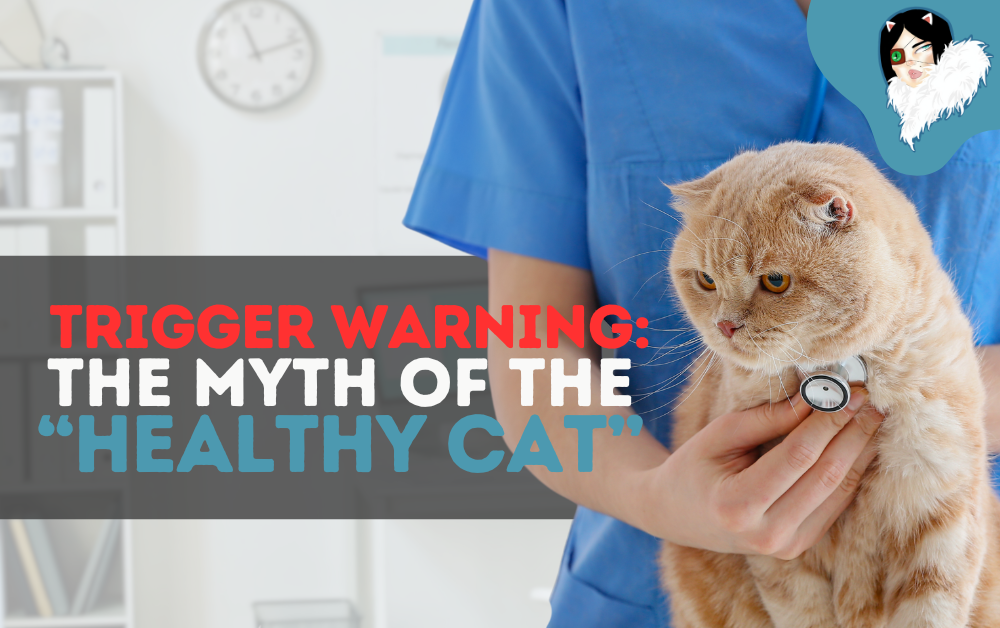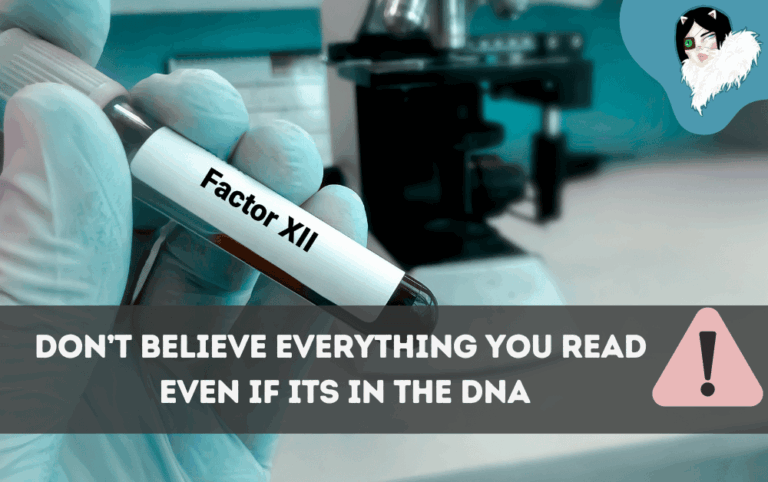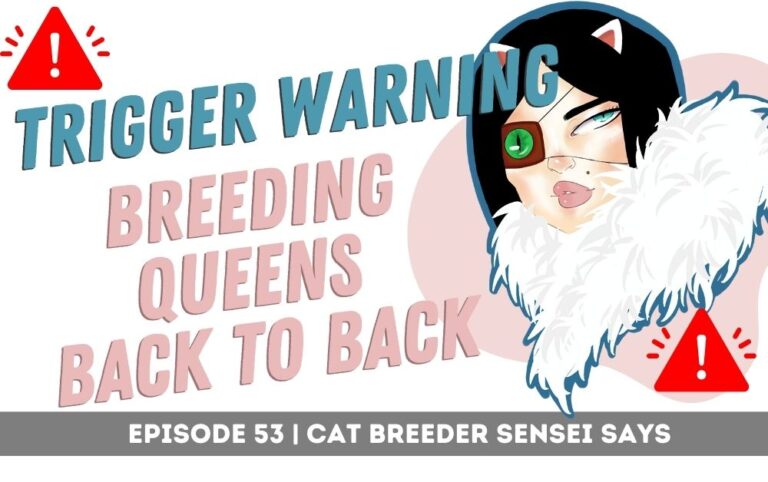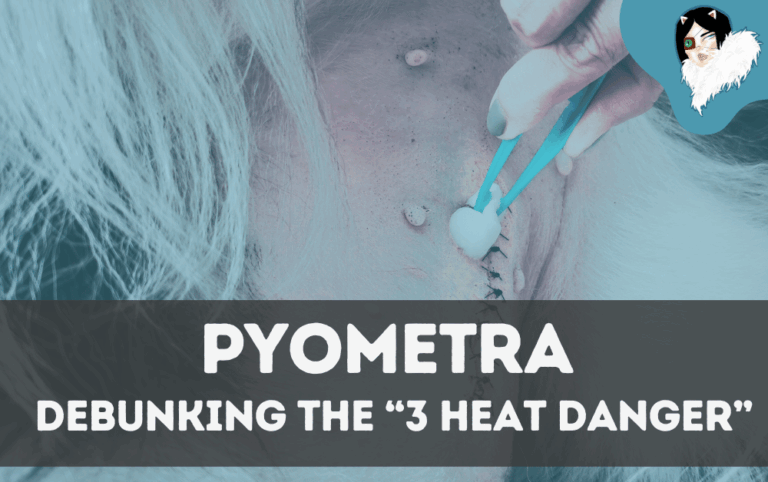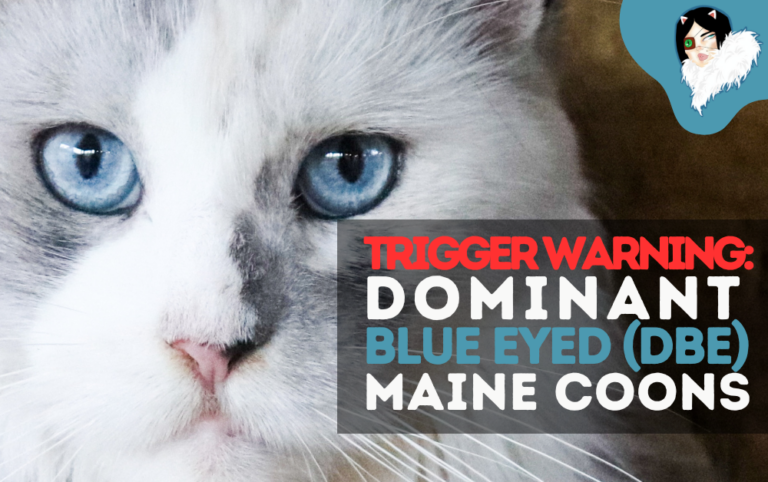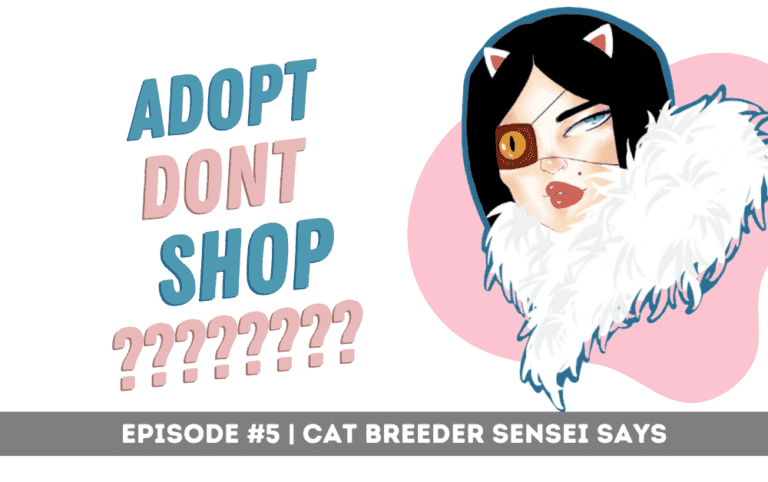Raising and Maintaining Healthy Cats in Your Breeding Program
Breeding healthy, top-quality cats is the ultimate goal for every serious breeder—but let’s be real: it’s hard as hell. Selecting the right foundation cats is just the beginning. You’re looking for ideal structure, genetics, temperament, and health—all wrapped up in one perfect feline. And even when you think you’ve found “the one,” surprises can pop up later: hidden genetic traits, reproductive issues, or health conditions that weren’t visible when they were a kitten.
Raising them is another beast. You’re managing nutrition, environment, enrichment, and socialization—while also watching closely for any signs of illness or developmental delays. Then comes the ongoing maintenance: annual screenings, DNA testing, vet visits, heat cycles, hormone shifts, and sometimes heartbreaking decisions about whether a cat should stay in the program.
And just when you feel like you’ve got it all dialed in, boom—something unexpected hits. A queen with fertility issues. A tom who loses interest. A kitten with a congenital defect. The truth is, even the most dialed-in breeding programs will be met with challenges, no matter how well you plan or how experienced you are.
But this journey isn’t about perfection—it’s about persistence. In this article, we’ll walk through some of the biggest roadblocks breeders face, from genetic disappointments to illness outbreaks, and offer clear, practical ways to overcome them while staying grounded in your mission: to raise the healthiest kittens and cats possible.
Trigger Warning Podcast Episode about Healthy Cats:A Thought Provoking Podcast]
n our latest episode, we’re diving headfirst into a topic that’s sure to ruffle some whiskers: What does it mean for a cat to be “healthy”? This question gets us fired up because it’s way more complicated than it sounds. We’re peeling back the curtain on the cat breeding world, and we want you to join us for the ride.
Listen to the Episode Below and Tell Us What You Think!
We’re dying to hear your take on this hot topic. Drop your thoughts in our No Judgement Zone Pedigree Cat Breeder Community or comment on our blog post. How do you define a healthy cat? Let’s get the convo started!
So, What’s a “Healthy” Cat Anyway?
We’ll be real with you: the term “healthy cat” gets tossed around like catnip, but pinning it down is like herding cats. Here’s how we see it:
- No Big Drama: For us, a healthy cat lives its full life—say, 12-15 years—without major health hiccups. Think routine vet visits for checkups and shots, not emergency surgeries or disease.
- Mischief Isn’t a Diagnosis: Cats are curious little gremlins. If they swallow a toy or get a tummy ache, that’s not a health failure—it’s just them being cats.
- Looks Can Fool You: Cats can strut around looking fabulous for years, only for something sneaky like a heart condition to pop up later. That’s why we’re cautious about slapping the “healthy” label on any cat.
Truth is, we can’t predict the future. No matter how many tests we run, claiming a cat is 100% healthy feels like tempting fate.
The Big Trigger: Hypertrophic Cardiomyopathy (HCM)
Alright, let’s talk about the elephant in the room—or rather, the heart condition in the cattery. Hypertrophic cardiomyopathy (HCM) is a big deal, especially for breeds like Maine Coons, Ragdolls, and Sphynx. It’s also one of the most divisive topics in our community. Here’s what we dug into:
- HCM by the Numbers: Our trusty AI sidekick (with an IQ double ours, no biggie) says 30-34% of Maine Coons carry an HCM-related genetic mutation, but only 10-25% show symptoms. That’s a wild range!
- The Echocardiogram Drama:
- Why We Screen: Some breeders swear by annual echocardiograms to keep tabs on their cats’ hearts. The idea is to catch HCM early and avoid passing it to kittens. Skip these, and the “cat hags” will come for you, calling you a backyard breeder.
- Why We Question It: Here’s the kicker—cats can pass every echo with flying colors, produce a ton of kittens, and still develop HCM later. We’ve seen it happen. One breeder we know lost her beloved stud to a sudden heart attack, despite yearly clear tests. It crushed her so much she quit breeding. That makes us wonder: are we really preventing HCM, or just chasing our tails?
- Our Stories: We’ve had our own wake-up calls. We had a stud who tested clear via echo for years, only to be diagnosed with heart disease at age seven. Out of his 45 kittens, one had HCM—or so we think, since no necropsy confirmed it. These experiences hit hard and make us question the “healthy” label.
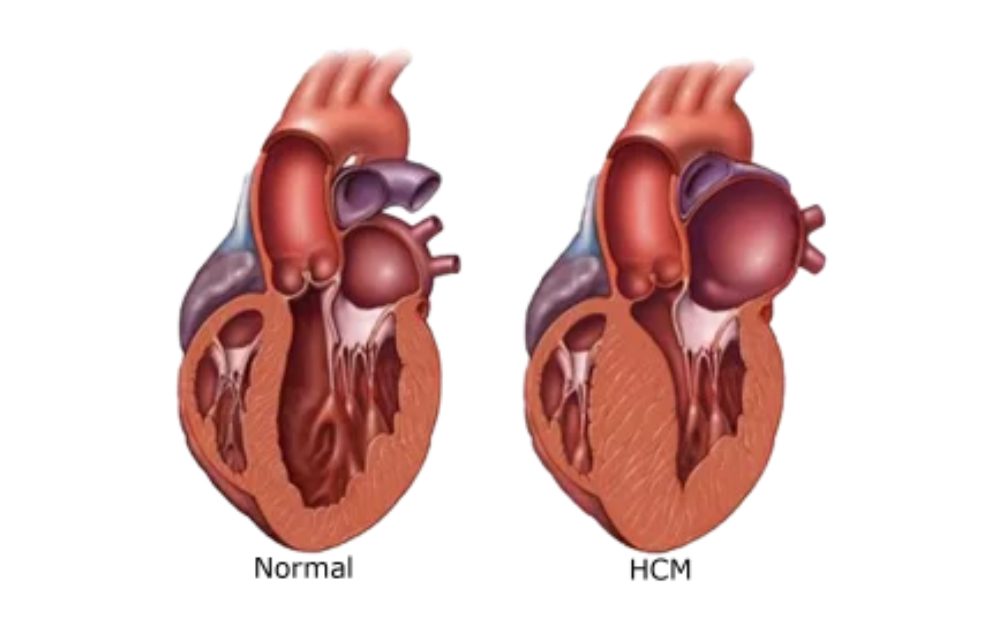
We’re not here to tell you to screen or not. It’s your cattery, your call. But we think it’s worth asking: do yearly echoes give us peace of mind, or just a false sense of control?
Beyond HCM: Other Health Curveballs
HCM isn’t the only thing keeping us up at night. We also talked about other health issues that mess with the “healthy cat” idea:
- Hip Dysplasia: Is it genetic, or just because Maine Coons are giant cats putting stress on their joints? Even with normal screenings in parents, some kittens end up with it. Can we ever breed it out, or is it something that just happens?
- Feline Infectious Peritonitis (FIP): This one’s a heartbreaker. Cats can get FIP out of nowhere, like humans getting cancer. No test can predict it, and it’s a reminder that some things are beyond our control.
- Weird One-Offs: Ever heard of megaesophagus? Entropion? Leg-perthes disease? We’ve seen kittens with these rare conditions—stuff you can’t screen for. One kitten needed surgery for a bone spur in her hip socket. Another had a throat issue requiring lifelong meds. These flukes keep us humble.
Viruses and Bacteria in the Cattery
Every one of us, at some point, will be confronted with a nasty pathogen. No matter how clean our cattery is, how much you sanitize, and how much you care for your cats. It’s going to happen.. Don’t let the pathogens scare you.
Read our friendly guide to cattery pathogens to help you deal with the viruses and bacteria that are sure to strike.
Why We Don’t Call Newborn Kittens “Healthy”
Here’s where we might step on some toes: calling newborn kittens “healthy” is a pet peeve of ours. Hear us out:
- You Can’t Know Yet: A kitten might look perfect at birth, but issues can pop up in hours, weeks, or years. We’ve seen “healthy” kittens pass away days after birth. Labeling them healthy is more about marketing than truth.
- Wait for the Long Game: We tell new breeders to hold off on health claims until their kittens hit 4-5 years old. That’s when you really know your lines. One health issue? Probably a fluke. Two from the same parent? Time to rethink that cat’s role in your program.
- Stress Reveals All: Moving to a new home is stressful for kittens, and that’s when problems like upper respiratory infections (URIs) or weak immune systems show up. A vet’s health certificate doesn’t mean much if the kitten’s sneezing the next day.
We’re not saying don’t be proud of your kittens—just don’t make promises you can’t keep.

Get the Training and Support That You Need
When you become a member today, you’ll have instant access to a personal mentor who will be there for you and give you the answers you need.
Not only this, you’ll also get access to:
- Step-by-Step Training Courses about Breeding Cats
- Full Blueprints for Marketing Your Cattery and running your business professionally
- Personal Mentor that will help you with ALL OF YOUR QUESTIONS
- Help determining the right price for your kittens
- Daily Marketing Tips via Text Message
- Unlock TikTok For Your Cattery with the course on Viral Video Creation
- Digital Resources and Tools
- Invite Only to our Discord
- Exclusive Deals on SpaySecure and Sensei Store
- Monthly “Members Only” Training Calls
DNA Testing: The Purpose and it’s Limits Defined
DNA testing is a powerful tool in the world of pedigree cat breeding. It gives breeders a behind-the-scenes look at the genetic makeup of their cats, helping them make informed decisions before pairing them for mating.
These tests can identify carriers of specific hereditary diseases like hypertrophic cardiomyopathy (HCM), polycystic kidney disease (PKD), or spinal muscular atrophy (SMA)—all of which can impact the health and longevity of kittens. By identifying which cats carry problematic genes, breeders can avoid high-risk pairings and work toward producing healthier litters over time. It’s like having a cheat sheet for your breeding program—it doesn’t tell you everything, but it tells you enough to help make smarter moves.
That said, DNA testing isn’t a one-stop-shop for health screening. While it does reveal genetic predispositions, it can’t detect everything. It doesn’t replace physical health exams, echocardiograms, or hip X-rays, all of which are crucial in identifying non-genetic conditions or early signs of disease.
A cat might test “clear” for HCM genetically, but still develop the condition later in life. That’s why DNA testing should be used as a pre-screening tool, not the only tool. Think of it as one piece of the health puzzle—it’s essential, but it’s not the whole picture. Responsible breeders layer DNA results with other health tests, breeding history, and even temperament to create a solid foundation for a thriving breeding program.
Here’s an interesting article about a popular DNA testing company that caused many cats to enter early retirement due to inaccurate reporting of the disease that was being tested (Factor XII). Even if BOTH parents carry one copy of this, everything will be fine! Well, we know that now – but many of us WISH we would’ve known sooner.
The Truth About Pyometra: It’s Bacterial, Not Hormonal
For years, there’s been a persistent myth floating around breeding circles that a female cat will develop pyometra if she goes through “three heats without being bred.” This idea has been passed down like gospel, but it’s simply not true.
Pyometra is caused by a combination of hormonal changes and bacterial infection—and it’s the perfect storm of both that puts a queen at risk.
After a queen goes into heat, her body produces the hormone progesterone, whether she gets bred or not. Progesterone keeps the uterine lining thick and creates a cozy environment for embryos to implant. But if no pregnancy occurs, that lining still hangs around. Over time—especially with repeated heat cycles—this lining can become thick, cystic, and inflamed (a condition known as cystic endometrial hyperplasia). This makes the uterus more susceptible to infection.
Dive deeper into the primary cause of pyometra infection, and how to reduce the risk.
Standing By Our Cats: Our Promise to Buyers
For us, being a responsible breeder isn’t about producing flawless cats (spoiler: they don’t exist). It’s about standing by our cats and our buyers when things go sideways. Here’s how we do it:
- Keeping It Real: We’re upfront with buyers—no cat is guaranteed to be issue-free, no matter how many tests we do. Honesty builds stronger relationships than empty promises.
- No Defensiveness: If a buyer calls us about a sick kitten, we don’t say, “It was fine when it left!” That’s a cop-out. Instead, we offer advice, check in daily, and sometimes cover vet bills. One buyer was shocked when we sent money for a URI treatment—she didn’t expect it, but it showed we care.
- Seven-Year Guarantees: We’ve upped our health guarantee to seven years. If something happens, we’ll replace the cat, no questions asked. No need for necropsies.
- Picky About Buyers: We use a detailed application to screen buyers, ensuring they have realistic expectations. Our Sensei Collective membership includes this template to help other breeders do the same.
Building a Community and Learning Together
We love connecting with you all, and this episode is no exception. Here’s how we’re keeping the conversation going:
- No Judgement Zone: Join our No Judgement Zone Pedigree Cat Breeder Community to chat about this episode and share your stories. We just posted an anonymous HCM survey there—how often do you screen, and have your cats been diagnosed?
- Sensei Collective: Want to level up your breeding game? Our Sensei Collective has courses on everything from breeding basics to TikTok marketing, plus tools like our buyer application template. You can even get one-on-one mentoring from us.
- Evolving Together: We geeked out over mink Ragdolls finally being recognized as a breed standard. It’s proof that our community’s research and persistence can move the needle. Let’s keep pushing for better health outcomes!
Let’s Hear From You!
This episode got us thinking hard about what “healthy” really means in our world. Now it’s your turn:
- Do you vibe with our take on HCM screenings, or do you see it differently?
- Have you dealt with surprise health issues in your cats?
- How do you handle buyer expectations while keeping it real?
- Have you had a young Queen develop pyometra? How many heats did she have?
- Do you rely solely on DNA testing to pre-screen the health of your breeding cats? What other tests do you do prior to breeding?
Leave a comment on our blog to share your thoughts. Let’s support each other and make the cat breeding world a better place for our furry babies.
Keep making good choices, and we’ll catch you in the next episode!

